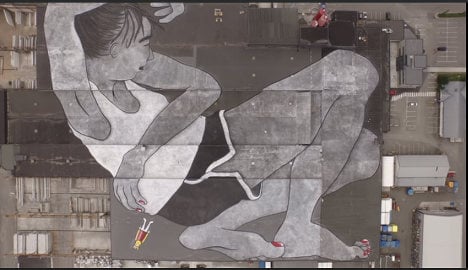The mural,”Lilith and Olaf”, depicts a gigantic curled-up woman and a tiny (though much larger than life) red figure that represents King Olaf I of Norway.
Officially the site opens to the public on the 4th of September as part of the 15th Nuart street art festival in Stavanger, Norway.
Like many of Ella & Pitr's works, the piece is best appreciated from the air — the collective's previous works have been painted on airport runways, rooftops, and, in one case, a huge field of grass.
Ella & Pitr draw their inspiration from comics and children's books. Their most recent work in Norway is part of a series of 'sleeping giants' seen on rooftops all over the world. The duo has brought their work to Italy, Canada, Portugal, and Chile.
The sleeping giants are black and white, often with red details, as in the painting in Norway.
The creation of Lilith and Olaf took just four days, although the temporary nature of street art makes it difficult to confirm its status as the worlds largest mural.



 Please whitelist us to continue reading.
Please whitelist us to continue reading.
Member comments